The Botanical Gardens of Peter the Great in St Petersburg are both a scientific institution and a place of beauty. Once the center of botanical research in the Russian Empire, today the gardens boast the largest greenhouse complex in the country, an arboretum with over 900 species of plants and trees, and a 19th-century Botanical Museum. Here is the perfect place to explore the richness of nature and escape the hustle and bustle of St Petersburg.
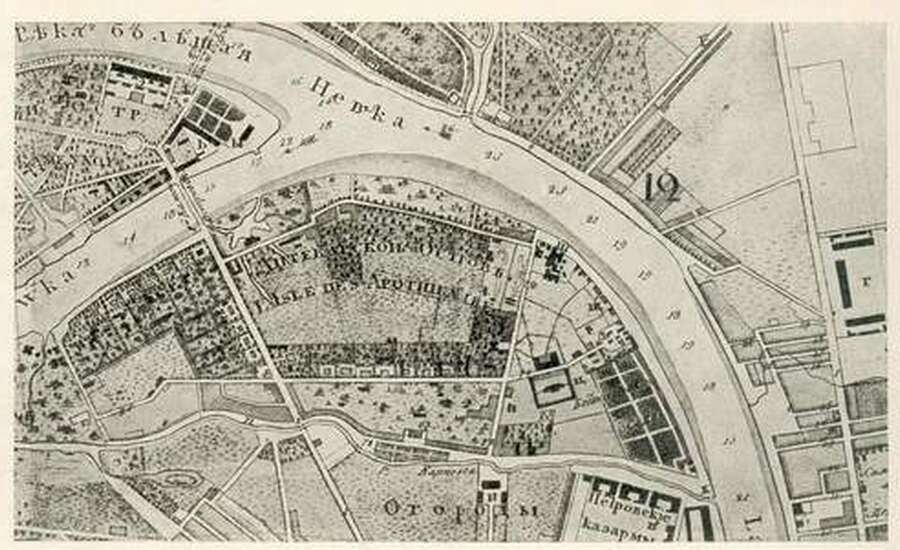
Plan of the Gardens in 1843, unknown author
Determination alone cannot build a city: especially in the inhospitable climates of St Petersburg, medical care was paramount. And so, in 1714, Peter the Great established a pharmaceutical garden on one of St Petersburg’s northern islands to cultivate medicinal herbs. To overcome the unyielding marshland and bitter weather, the first greenhouses were built in the pharmaceutical gardens in the 1730s and 1740s. Thanks to these, a collection of exotic medicinal plants could be grown in the northern capital, including aloe, citrus, boxwood (used in place of quinine and to treat gout, syphilis and epilepsy), and geraniums (praised for their anti-inflammatory and antiseptic properties). The gardens continued to flourish throughout the late 1700s, when Catherine the Great expanded the greenhouse collection and famous botanists began to give lectures there.
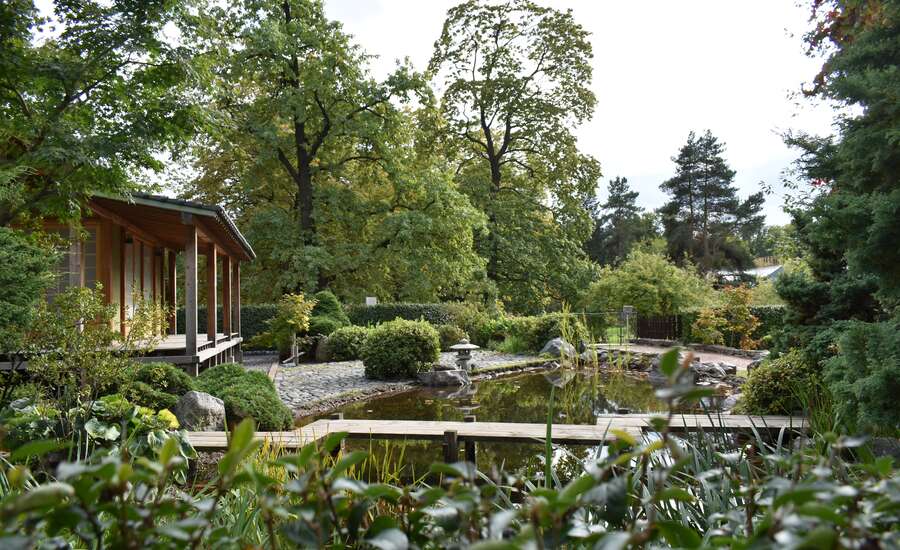
Photo by Maria Rodideal on Unsplash
Did you know? Aptekarsky Island takes its name from the gardens: aptekarsky means ‘pharmaceutical’ in Russian.
The Botanical Gardens fell into disarray in the early 19th century, and by the 1820s, 75% of the greenhouses were unusable. So, by order of Alexander I in 1823, the pharmaceutical garden was transformed into an independent scientific institution and awarded the status of Imperial Botanical Garden. Over the next century its collection was used by universities and institutes all over the Empire for research and practical purposes, public lectures were held, and a school of horticulture was opened. Full-scale reconstruction took place and included 34 interconnected greenhouses, a library, laboratory, and Botanical Museum. Rare plants were acquired through the expeditions of Russian and foreign scientists and explorers, as well as from botanical gardens in India, Australia, and USA. By the early 20th century, the Imperial Botanical Garden’s collection numbered over 26,000 species.
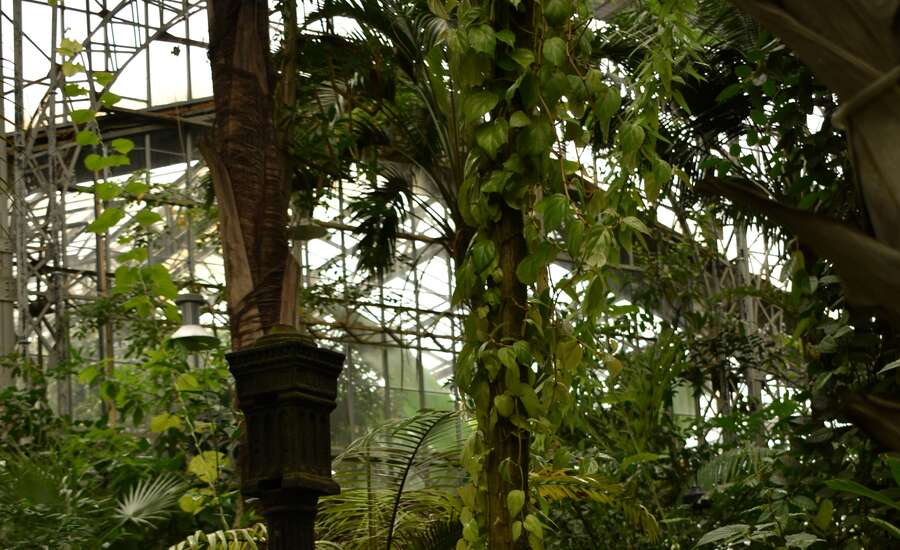
Photo by Maria Rodideal on Unsplash
Did you know? At one point, the Imperial Botanical Garden was even home to the largest swimming pool in Europe!
The gardens became the Main Botanical Garden of the USSR in 1925, and the Botanical Institute of the Academy of Sciences of the USSR was founded there in 1931. Yet they were disastrously damaged during the Siege of Leningrad, when the greenhouses were bombed in the autumn and winter of 1941. Little over 200 species out of nearly 6,400 endured that winter; most of the surviving plants were cacti taken home by the garden’s employees. Despite this, the collections were soon rebuilt.
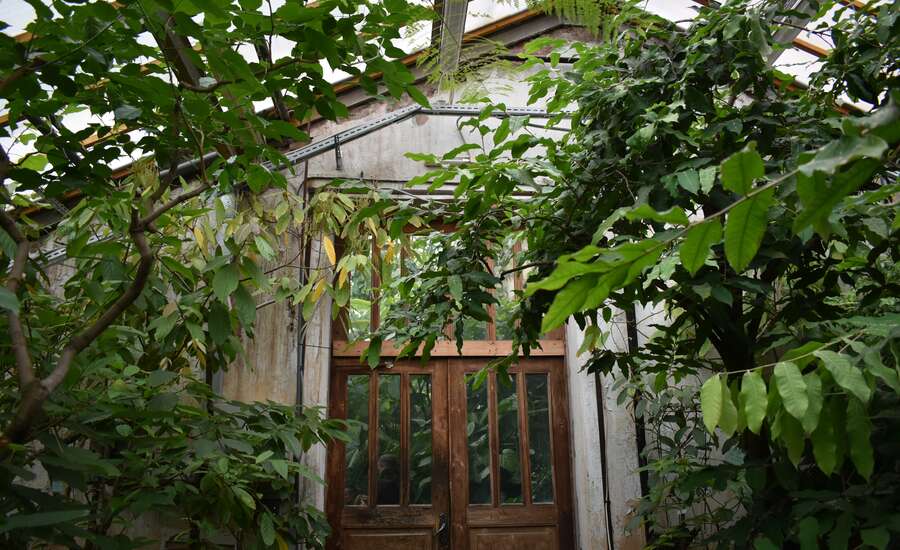
Photo by Maria Rodideal on Unsplash
The two dozen greenhouses of the Botanical Gardens support 13,000 species of plant (the world’s fifth-largest collection!) including rare and endangered varieties. There are two main greenhouse walking routes available to visitors, the subtropical and tropical routes, and each takes between 1 and 1.5 hours to complete. Don’t worry about the weather – the greenhouses are all connected in a huge square, so you can admire flora from all over the globe without ever stepping into the cold.
Subtropical climates are characterised by hot, dry summers and cool, wet winters. Greenhouse No.1 is the ‘hallmark’ of the Botanical Gardens, and its inhabitants include ancient conifers and cold-resistant bananas. This greenhouse was built in 1889 in the Tauride Gardens and moved to the Botanical Gardens in 1925, and its hipped roof is reminiscent of the Palm House at Kew Gardens in London. Greenhouse No.2 is home to citruses and camellias, including the Camellia sinensis whose leaves are used to make every variety of tea in the world. Greenhouses No.3-7 showcase plants from the Mediterranean, South Africa, the Americas, South East Asia, and Australasia.
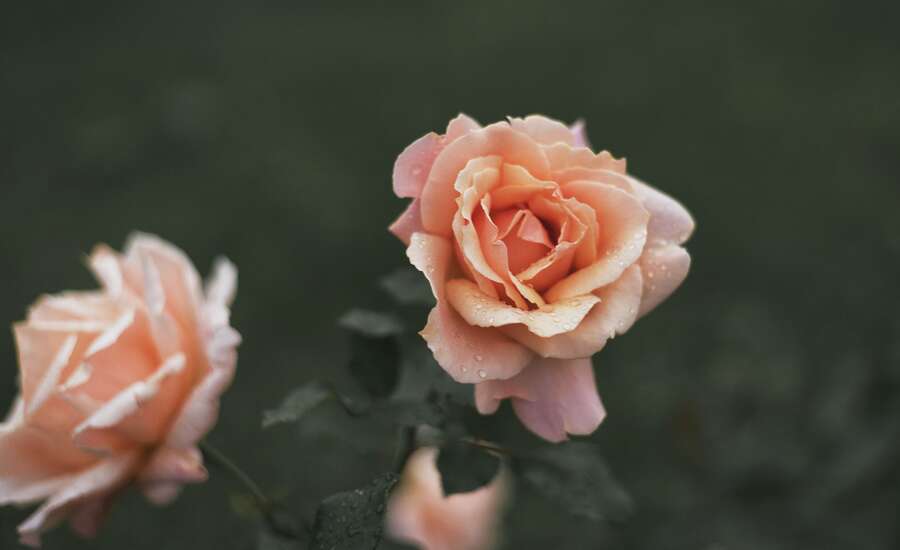
Photo by Alina Lobanova on Unsplash
The extreme weather of tropical climates has led to the evolution of some very unusual plants. In Greenhouse No.15 you can discover ferns and cycads, some of the most ancient plants to exist on our planet, and can get to know the inhabitants of African and South American deserts in Greenhouse No.16 (be careful not to touch anything!) Greenhouse No.17 shows plants which have adapted to the watery season of the savanna and monsoon forests, and Greenhouse No.18 is dedicated to rainforest plants, including a banana tree which survived the Siege of Leningrad. Greenhouses No.19-21 are home to ornamental plants and herbs, plants with medicinal (and poisonous!) properties, and fruit-bearing plants.
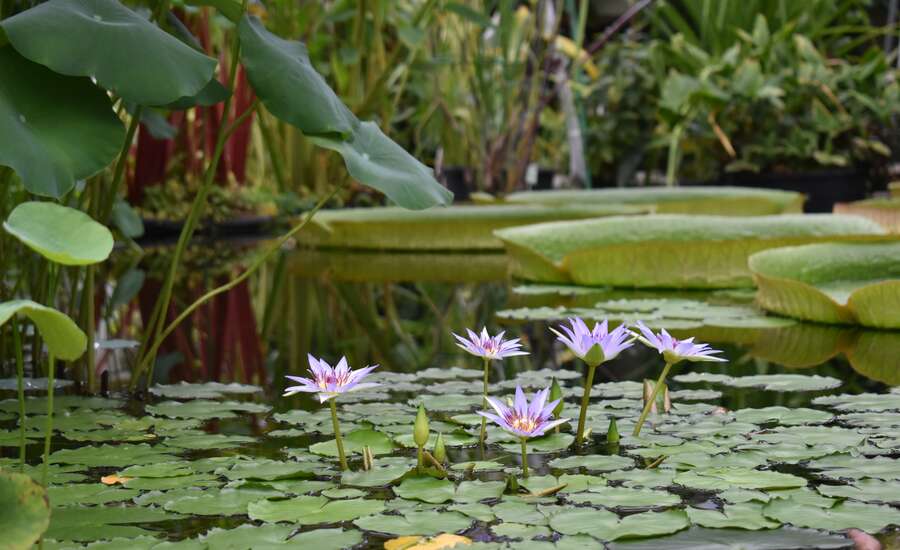
Photo by Maria Rodideal on Unsplash
The water greenhouse complex comprises three sections – the Mangrove Forest, Victoria Greenhouse with its gigantic lily pads, and the Large Palm Greenhouse which accommodates towering palm trees and bamboos.
The Arboretum Park of the Botanical Gardens is one of the oldest parks in Russia, founded in 1823. It is populated by over 930 species, from local trees to rare and exotic plants, from the hardiest mountain dwellers of the north to the shrubs of the steppe. Its collection of native Russian species is particularly unique. The Arboretum Park consists of a regular park of tree-lined avenues planned in the 1820s, and a landscape park laid out between the 1860s and 1880s. Amongst the park’s attractions are a rose garden and iris garden, each displaying over 100 fragrant varieties of flower; ornamental flower gardens which blossom year-round; and a rockery of mountain plants.
Part of the Komarov Botanical Institute, the Botanical Museum’s exhibitions are dedicated to our planet’s flora, the evolution of the plant world, and the role of plants in human life. The expositions include wood, fruit and seed samples, fossilised plants, plant products, photographs, and documents. At present the museum is closed for general visits, but it is opened several times a year during holidays and festivals.
Lopukhinsky Garden: A quiet garden on the banks of the Neva which formerly belonged to a noble family’s estate. There are ponds, bridges, woodland walking paths and a path along the Neva, a historic mansion, and little pavilions.
Karpovka River Embankment: A brand-new pedestrian embankment with gardens, cycle paths, playgrounds and stylish street furniture, which lies just opposite the Botanical Gardens.
Petrogradsky Island: The heart of this island lies just a 10-minute walk from the Botanical Gardens. You can explore its narrow grid-like streets, beautiful architecture, and cultural and historical landmarks.
Peter and Paul Fortress: The formidable fortress around which St Petersburg was built is located a 30-minute walk or 1 metro stop from the gardens. Its main attractions are the Trubetskoy Bastion (Tsarist Russia’s main political prison) and the Peter and Paul Cathedral (the world’s tallest Orthodox church and the resting place of the Romanov family).
Essential information for visitors
Address and contact details
Website: http://botsad-spb.com/en/
Phone: information desk +7 (931) 202-17-14 (Tues-Sun 10:00-17:00)
Nearest metro: Petrogradskaya (1.1km)
Opening hours and tickets
Arboretum Park:
Current opening hours: Tuesday – Sunday 10:00 – 17:00 (last entrance at 16:00).
Adult ticket is 150 roubles, child ticket is 50 roubles.
Greenhouse complex:
Current opening hours: Saturday and Sunday 11:00 – 16:00.
Adult ticket is 400 roubles, child ticket is 250 roubles.
Join us on Facebook
We invite you to become a fan of our company on Facebook and read Russian news and travel stories. To become a fan, click here.
Join our own Russian Travel, Culture and Literature Club on Facebook. The club was created to be a place for everyone with an interest in Russia to get to know each other and share experiences, stories, pictures and advice. To join our club, please follow this link.